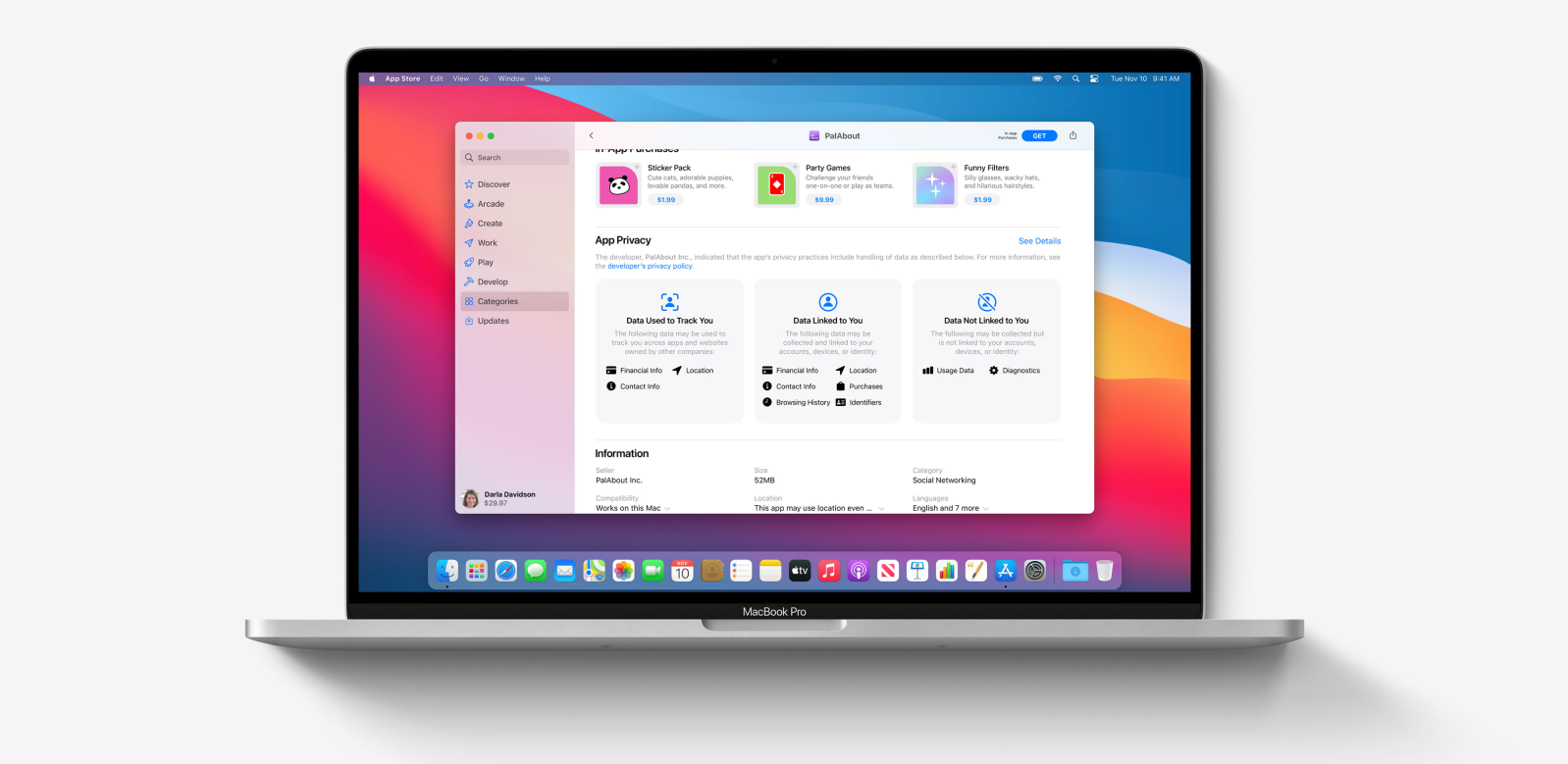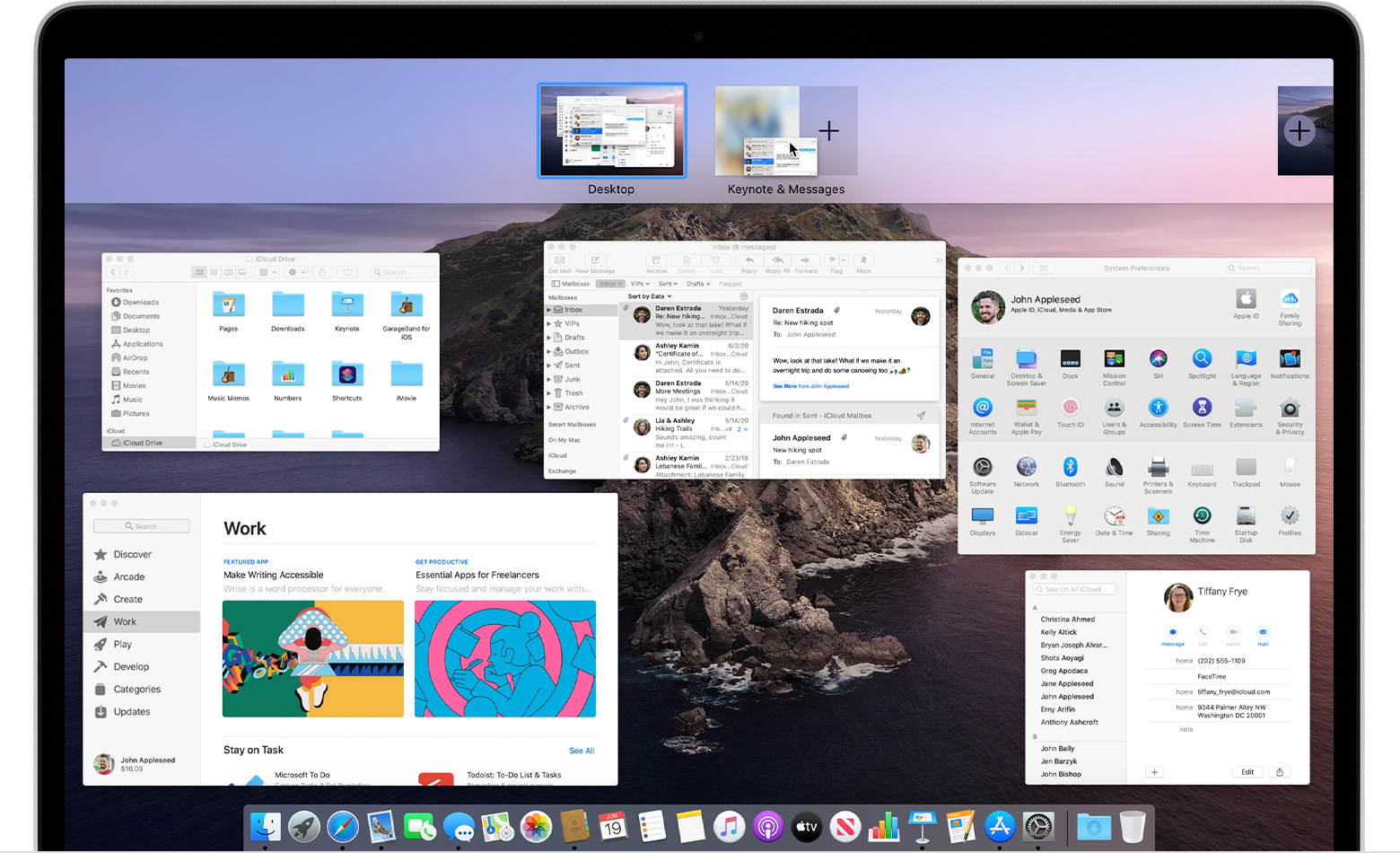Apps from the Mac App Store: Applications you install from the Mac App Store are considered the most trustworthy, as they've gone through an Apple vetting process and are hosted by Apple themselves. They're also sandboxed, although this is a reason why many app developers don't use the Mac App Store. If you don't want to format or erase your drive, you'll have to remove it and install a different one before you proceed. For this tutorial, an Intel NUC DC3217IYE was used as the PC base to create a Hackintosh, and the settings seen in screenshots pertain specifically to that hardware configuration. Scans the average Mac in under 30 seconds. Run the malware scanner in the background while you boot up your favorite game and it's done by the time you're ready to play. You can even customize your scans to run when you're not using your Mac at all, at any day, at any time. In Mac, the root directory can also be referred as Macintosh HD as this will show you the root directory files and folders. By default you won't find it in Finder and desktop as most of the users do not need to access the system files and folders. MacOS Big Sur elevates the most advanced desktop operating system in the world to a new level of power and beauty. Experience Mac to the fullest with a refined new design. Enjoy the biggest Safari update ever. Discover new features for Maps and Messages. And get even more transparency around your privacy.
- Don't Look At Greg Mac Oscar
- Don't Look At Greg Mac Os 10
- Don't Look At Greg Mac Os X
- Don't Look At Greg Mac Os Sierra
By default Mac doesn't show you the Root directory in Finder or Desktop. In this guide, I will show you how to access the root directory in Mac, there are several ways to do it. I will also tell you how to see the hidden directories in root directory.
Method 1: Show Macintosh HD in Finder and Desktop
In Mac, the root directory can also be referred as Macintosh HD as this will show you the root directory files and folders. By default you won't find it in Finder and desktop as most of the users do not need to access the system files and folders. However you can change the settings in Finder Preferences to show it in Finder sidebar and as an icon on desktop.
To do this: Open Finder, go to Finder Preferences from the top finder menu and check the Hard disks option in General tab. Arrow madness mac os. This will show the Mac HD on Desktop.
To show the Mac HD in Finder sidebar: Open Finder, go to Finder Preferences from the top finder menu and go to Sidebar tab then check the Hard disks sub option listed under Devices. This will make the Macintosh Hd visible in finder sidebar.
Note: Refer this guide to read this in detail along with the screenshots: Show Mac HD in Finder and Desktop.
Method 2: Go To Folder option in Finder
You may not know this but there is a Go to Folder option in Finder that opens up a dialog where you can type the path and it would open up the content of given path in Finder.
You can use this option to open the root directory, all you have to do this is type the / in path field and click Go.

To open this, Open Finder, in the finder menu under Go tab select Go to Folder.
This will open up this dialog box. Type / and hit Go.
Method 3: Using command line
You can also access the root directory from command line. To do this: Open terminal: Press Command + Space, type terminal and hit return.
Type the following command in terminal and hit return
Note: There is a space between open and /.
Show hidden files and sub directories in root directory
By default the root directory will not show you the directories like /usr, /bin, /etc etc. To make them visible you need to show the hidden files.
Open terminal and type the following command and hit return.
Refer this guide to read about it in detail: Show/hide hidden files in Mac
You may have been led to believe that you don't have to worry about computer viruses on your Mac. And, to some extent, there's truth to that. While your Mac can definitely be infected with malware, Apple's built-in malware detection and file quarantine capabilities are meant to make it less likely that you'll download and run malicious software.
Apple introduced malware detection to the Mac OS with Snow Leopard (Mac OS 10.6). This system consists of the quarantine of any app downloaded from the Internet, the use of Code Signing certificates to verify that an app is coming from a legit source, and regular security updates that include databases of known malware targeting the Mac OS.
Because of this system, called File Quarantine and occasionally referred to as XProtect:
Apps in quarantine display a dialog window reminding you where the app came from and asking whether or not you're sure you want to open it.
Apps with no code signing certificate, depending on your Gatekeeper settings, may display a message saying the app can't be opened because of your settings. (For software you know is good you can bypass this by control-clicking the app and selecting Open from the resulting contextual menu.)
Apps that are known malware cannot be opened at all. You'll be met with a message offering the option to toss the app in the trash.
And this is why Macs remain mostly virus and malware free.
To make sure your Mac malware database is always up to date you'll want to verify that your Mac always automatically installs security updates and related system data files.
Don't Look At Greg Mac Oscar

To open this, Open Finder, in the finder menu under Go tab select Go to Folder.
This will open up this dialog box. Type / and hit Go.
Method 3: Using command line
You can also access the root directory from command line. To do this: Open terminal: Press Command + Space, type terminal and hit return.
Type the following command in terminal and hit return
Note: There is a space between open and /.
Show hidden files and sub directories in root directory
By default the root directory will not show you the directories like /usr, /bin, /etc etc. To make them visible you need to show the hidden files.
Open terminal and type the following command and hit return.
Refer this guide to read about it in detail: Show/hide hidden files in Mac
You may have been led to believe that you don't have to worry about computer viruses on your Mac. And, to some extent, there's truth to that. While your Mac can definitely be infected with malware, Apple's built-in malware detection and file quarantine capabilities are meant to make it less likely that you'll download and run malicious software.
Apple introduced malware detection to the Mac OS with Snow Leopard (Mac OS 10.6). This system consists of the quarantine of any app downloaded from the Internet, the use of Code Signing certificates to verify that an app is coming from a legit source, and regular security updates that include databases of known malware targeting the Mac OS.
Because of this system, called File Quarantine and occasionally referred to as XProtect:
Apps in quarantine display a dialog window reminding you where the app came from and asking whether or not you're sure you want to open it.
Apps with no code signing certificate, depending on your Gatekeeper settings, may display a message saying the app can't be opened because of your settings. (For software you know is good you can bypass this by control-clicking the app and selecting Open from the resulting contextual menu.)
Apps that are known malware cannot be opened at all. You'll be met with a message offering the option to toss the app in the trash.
And this is why Macs remain mostly virus and malware free.
To make sure your Mac malware database is always up to date you'll want to verify that your Mac always automatically installs security updates and related system data files.
Don't Look At Greg Mac Oscar
To do this:
- Open System Preferences
- Open the App Store preference
- Make sure that Automatically check for updates and Install system data files and security updates are checked.
This should keep your Mac free from most malicious software, although it's important to note that it does not make it impossible for malicious software to be installed on your Mac. There is no software that's able to catch everything. If new malware is released today and you download and run it today you will have done so before Apple's databases could have been updated. So it's always best to be wise when downloading software from unknown sources.
While it's unlikely that your Mac will run any malware, there is possibly a more pernicious issue: You Mac could become the Typhoid Mary of Windows viruses, which is to say, you could be harboring viruses on your Mac that won't effect you, but can be problems for Windows users.
Think I'm joking? Have a look at this screenshot, taken from my Mac during the course of writing this column:
That, my friends, is a list of 30 potentially bad things that…you guessed it, were found on my Mac while I was running a test virus scan, one of which is a Windows virus. And, nope, I did not plan this, even though I did plan to write about this problem.
So, how do you keep your Mac from relaying Windows viruses to Windows users?
ClamXav.
Why ClamXav? Because it has one job and it does it very well. It's not too intrusive. It doesn't try to do too much. If you're using Apple's Server app to host your email, it's what Apple uses to scan incoming mail for viruses.
Don't Look At Greg Mac Os 10
Dreadful bakery mac os. ClamXav is, like AdWare Medic, donationware and it is fantastic. You'll find it at the Mac App Store or you can download it directly from the ClamXav Website, where you can also make a donation.
Once you've downloaded and opened the app you'll want to set the app's preferences, as the default behavior is to scan for viruses but not delete or quarantine them. ClamXav offers five configuration options:
Don't Look At Greg Mac Os X
- General: For setting up alerts and whether or not to scan for malware and phishing in your email messages (which is where the app found infected files on my Mac)
- Quarantine: For defining where you want to quarantine malicious files
- Exclude Files: To specify file types you don't want scanned
- Log Files: For setting whether or not you want log files stored and for viewing them
- Schedule: For defining when you want the latest virus definitions downloaded and when you want scheduled scans to take place
Don't Look At Greg Mac Os Sierra
Once you've finished your setup, click the Start Scan button and go grab some milk and cookies. Scanning may take awhile, but when it's done you'll know for sure your Mac is clean.
